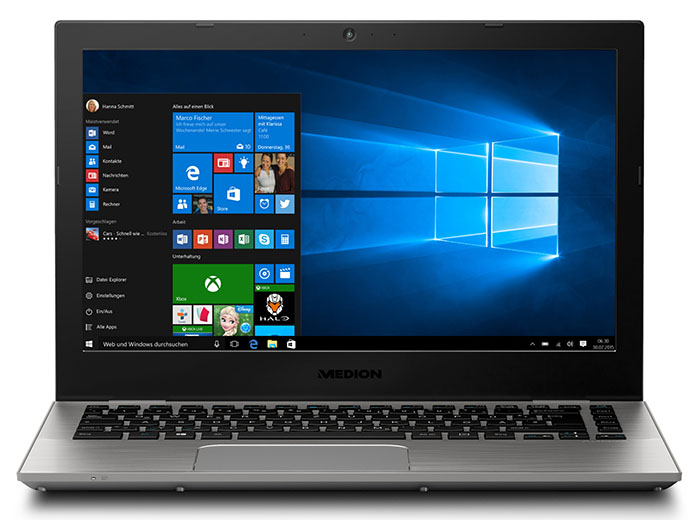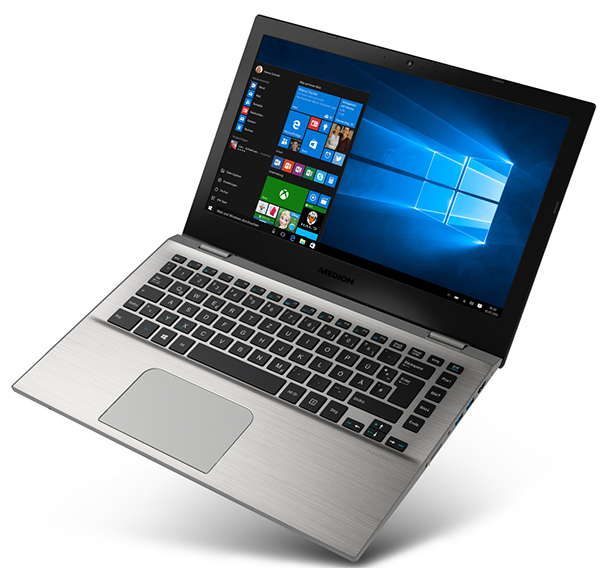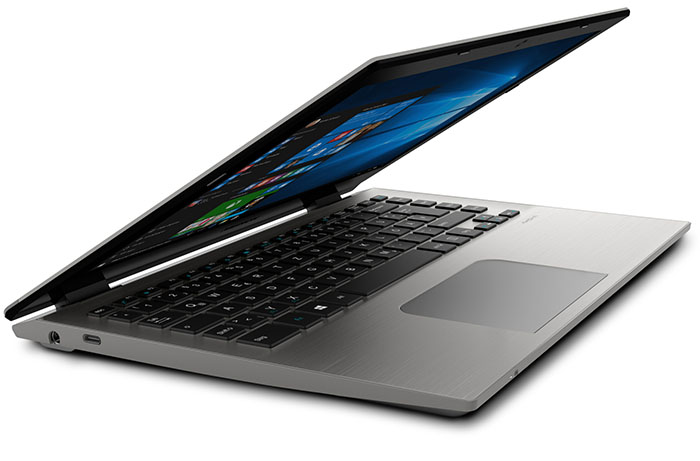Introduction
Remember when Intel proclaimed that ultrabooks were the next great thing. A $300m war chest, ostensibly for marketing, was earmarked to stave the threat from from Apple in the premium space. Five years on and the ultrabooks still have yet to get massive traction.
Now, however, a number of high-profile companies have released some alluring designs. The Dell XPS 13 looks lovely while the Razer Blade Stealth, released the other week, has a super-slim profile and a neat trick of attaching to an external graphics box for proper gaming thrills and spills.
For those that want all the basic ingredients of what makes an ultrabook attractive in our eyes - slim profile, low weight, all-day battery life - but don't want to pay through the nose, there are a number of options for late 2016, all bolstered by the latest Intel platform technology known as Kaby Lake.
Medion is playing in this field with the just-released Akoya S3409 ultrabook - a 13.3in model featuring 7th generation Intel technology and either a full-HD (1,920x1,080) or QHD+ (3,200x1,800) screen. Priced from £649, let's take a closer look.
Measuring 320mm wide, 212mm deep and 17.5mm high at its thickest point, Medion employs a mixture of plastic on the bottom and around the thick screen bezel while brushed aluminium features across the keyboard and lid. The premium looks and feel around the sunken keyboard is accentuated by raised edges and excellent fit and finish on both sides. It's also kept clean by having a small power button located on the right-hand edge.
Build quality varies across this ultrabook. It's well put together for the most part, and the hinges have a smooth motion when opening the lid. What's not so good is the flex around the trackpad and middle of the chiclet keyboard when even a moderate amount of force is applied.
The typing surface is interesting insofar as there is a column of keys to the right of Enter. Though we appreciate Medion trying to fit more in we're of the belief that this is a mistake; the Enter should definitely be the right-most key on any good board. Key travel, however, is better, and the S3409 is decent to type on for extended periods. What's more, the keys are backlit, in up to four levels of brightness, for easy navigation in darker environments. We like the spaces between them, too.
Medion's multi-gesture trackpad is shifted over the left in a move that we find unusual. While clicking on the main section poses no problems, the actuation point of the two lower buttons is woolly at best. They're not primed for fast, precise inputs and a lot more force is required to ensure the click. This is one area where the S3409 could really improve in, but we understand that design limitations are imposed by the original manufacturer of the chassis.
The board surface has a perforated section at the top where keyboard meets screen and this is where the S3409's speakers punch out a surprisingly loud tune through the Dolby-certified duo. Inevitably they naturally lack the heft found in larger laptops. The low-power nature of the ultrabook, meanwhile, means the chassis rarely gets overly warm to the touch.
There's a choice of Kaby Lake processors, from Core i3-7100U to Core i5-7200U and Core i7-7500U. Don't be fooled by their designation because all three use a dual-core, quad-threaded CPU architecture - in other words, you don't sacrifice a great deal by choosing the lower-spec models. The trio uses a standard 15W TDP and is supported by either 4GB (Core i3) or 8GB of dual-channel DDR3 memory. No room for discrete graphics means the trio relies on the integrated GPU instead. Medion does shoehorn in the latest 802.11ac networking chip, Wireless-AC 8265, from Intel, however.
Under the hood, our Core i5 sample shipped with 8GB of memory, a 256GB SATA-connected Phison SSD, and the full-HD version of the non-touch 13.3in IPS panel, and this combination is soon to be selling for a £649 ticket price. We'll talk more about the screen in the relevant section of the benchmarks, suffice to say that it produces a punchy, vivid picture that's helped by having a matte coating. A large bottom bezel does detract from the overall aesthetic - this is really a chassis for a 14in screen - while the top is punctuated by a 720p webcam.
Medion keeps it modern on the input front. Two USB 3.0 sit alongside HDMI 2.0 and an SD card reader. On the other side, with nothing in between due to the way the hinge comes over, a single USB Type-C is sensible. Being picky, Thunderbolt 3 would have been nice at this price point.
What else? A three-cell, 43Wh battery is normal capacity for a chassis this size. The accompanying charger adds an extra 376g to the travel weight and brings it up to a still-portable 1.63kg. Being a large-scale manufacturer there are inevitable tie-ups to software on top of the Windows 10 install. McAfee's LiveSafe is the biggest 'culprit' in this regard.
Backed by a two-year warranty and looking to tempt those of you who can't stretch to the the real premium tier for portable computing, Medion puts up a good showing in paper. Let's now see how well it translates to benchmark performance.













